Here is an interview I have done with artist Sean Sullivan. Sean is one of the artists in the show Three Painters at Duck Creek, which I curated for the Arts Center at Duck Creek. I enjoyed our conversation tremendously and I thank Sean for being a part of the fantastic show.

Sean Sullivan’s paintings from Three Painters at Duck Creek. Here is a list of works at the Arts Center at Duck Creek site.
Hiroyuki: How did you come to pursue visual art? Do you remember a special moment or a series of events that convinced you that this is something you want to do with your life?
Sean: I really came to art – drawing, writing poetry as a teenager right around the time I discovered music. Music opened my world up – gave me an awareness beyond my own experience. It’s always been and still is a very important part of the process for me.
As a teenager I was too shy to get up and sing songs so I channeled my energy into drawing and writing poetry. It felt like I was sending signals to unseen allies from behind enemy lines (still does). Drawing and writing poetry in a notebook felt possible to me somehow – both so close to the ‘self’ – idiosyncratic like handwriting. In other words, no one could tell me I was doing it wrong. Intelligence didn’t matter, training didn’t matter. I could pursue these ‘secret’ activities in earnest, at all times – even while in the classroom listening to the teacher or later on the job or traveling on a train, etc.
Coincidentally as I write this on Father’s Day – it was my father who really pushed me to pursue art and the creative life. He really believed in me and told me every chance he got.
Hiroyuki: I like how you as a child recognized the essential quality of art to be an expression of who you are for those who can accept you as who you are. Ultimately, I think this is one of the fundamental aspects of art that validates its meaning in our society today. In fact, your work does resonate in me at some deeper levels.
I’ve learned that you have a special process that’s in between painting and print making. Could you describe how it works and what it does? And how you came across it and why?
Sean: I began using the oil transfer process about ten years ago. I came to it by accident – out of frustration really. Basically I apply oil stick to a sheet of newsprint and thin it out with a silkscreen squeegee until it resembles something like carbon paper. I then place the found paper face down on top of the oil transfer paper and make a drawing on the reverse of the found paper with a Bic ballpoint pen. Each color in a finished piece is represented by a different sheet of oil transfer paper – a hybrid sort of drawing/printmaking process.
Over the years the process has refined some and evolved conceptually as I began to think of this process akin to plate photography and musical recordings.
I use ‘found paper’ not out of some nostalgic yearning but because I find new paper to be kind of cold and homogenized. The history embedded (the marks and color) in found paper give me a head start somehow – something to react to. I source the found paper mostly from books (used bookstores and antique stores) that I either buy or many times friends pass along.
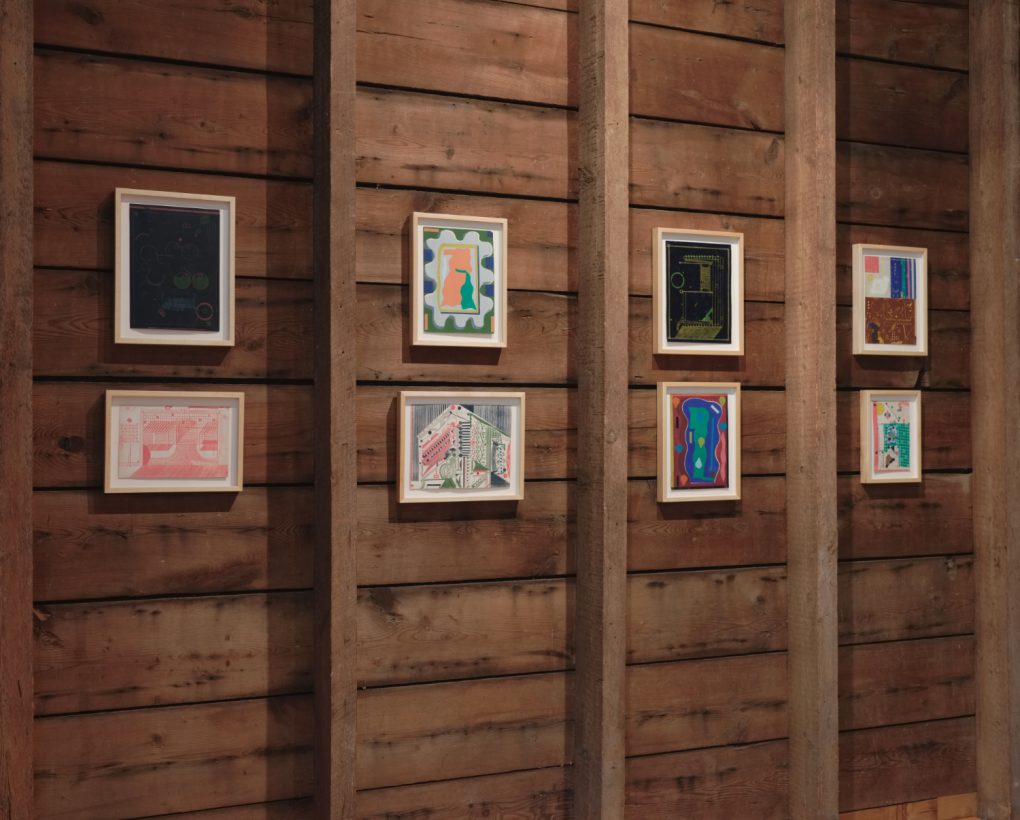
Sean Sullivan’s paintings from Three Painters at Duck Creek. Here is a list of works at the Arts Center at Duck Creek site.
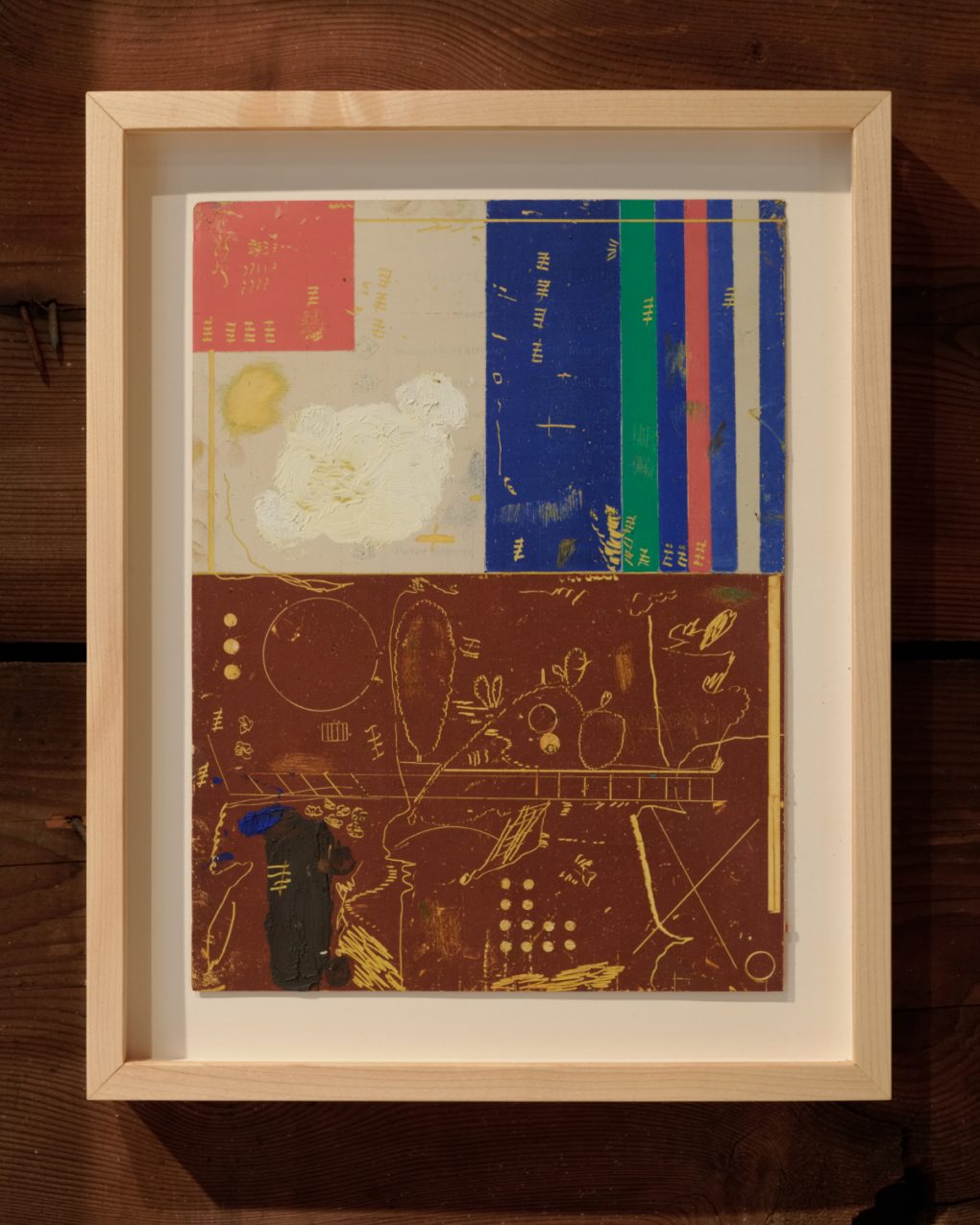 Carnival, 2020, Oil on found paper, Unframed: 7.75 x 10.5” / Framed: 10 x 14”
Carnival, 2020, Oil on found paper, Unframed: 7.75 x 10.5” / Framed: 10 x 14”
Hiroyuki: So you have a real setting with its history and characters somehow when you start. And your action is an interaction with it as much as your own narrative coming out of your psyche. And perhaps the print aspect allows your process to manifest in unexpected, yet organic ways? And what about the imageries?
Sean: Yes exactly. The history embedded in the paper offers a starting point and the process allows for both predictability as well as improvisation. The imagery is improvisational – instinctual even if I try and start with a plan it always goes off track and I just go with it. A piece usually falls flat if I’m trying too hard to ‘do’ something – to control the outcome. Hope that makes sense.
Hiroyuki: It certainly does. How do you describe your improvisational process? Could you describe your work environment for the readers?
Sean: I think improvisation begins before you even sit down to work. It’s an exercise in faith or the practice of faith maybe? I don’t mean that in a religious sense per se, but faith in ability, in intention and in good outcomes. A trust that you can make something from nothing and even if there are ‘mistakes’ or setbacks, by adjusting expectations you can land in a more unexpected, inspired place. There is no right, there is no perfect and starting from that point – everything, every mark makes sense and has a place.
My studio is full of natural light and close to the family – a small sun porch attached to our living room. Marie and the kids are in and out all the time. It’s a perfect situation for me – I need them close by. The paint I use, R&F Pigment Sticks, I make for a living (for the past 13 years). It’s all close by I guess.
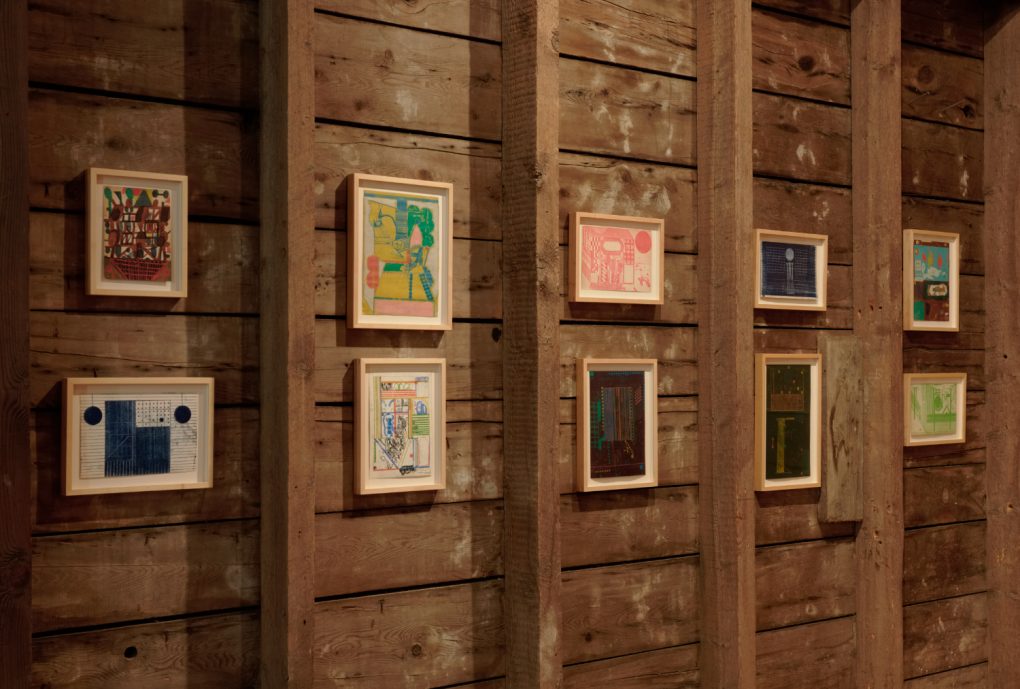
Sean Sullivan’s paintings from Three Painters at Duck Creek. Here is a list of works at the Arts Center at Duck Creek site.
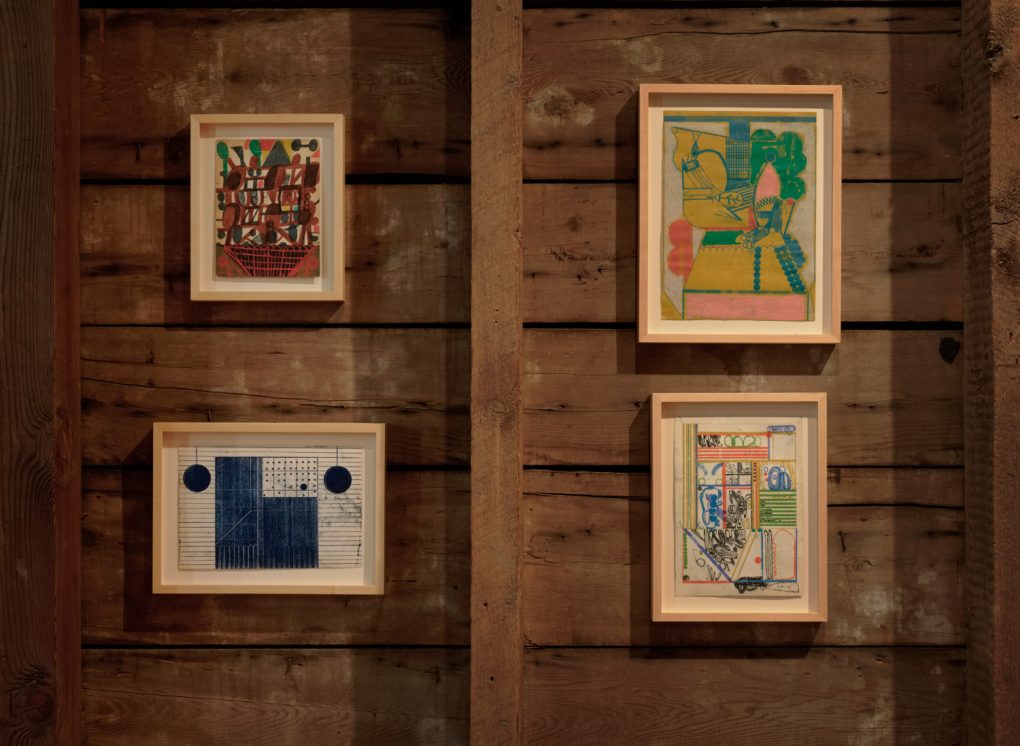
Sean Sullivan’s paintings from Three Painters at Duck Creek. Here is a list of works at the Arts Center at Duck Creek site.
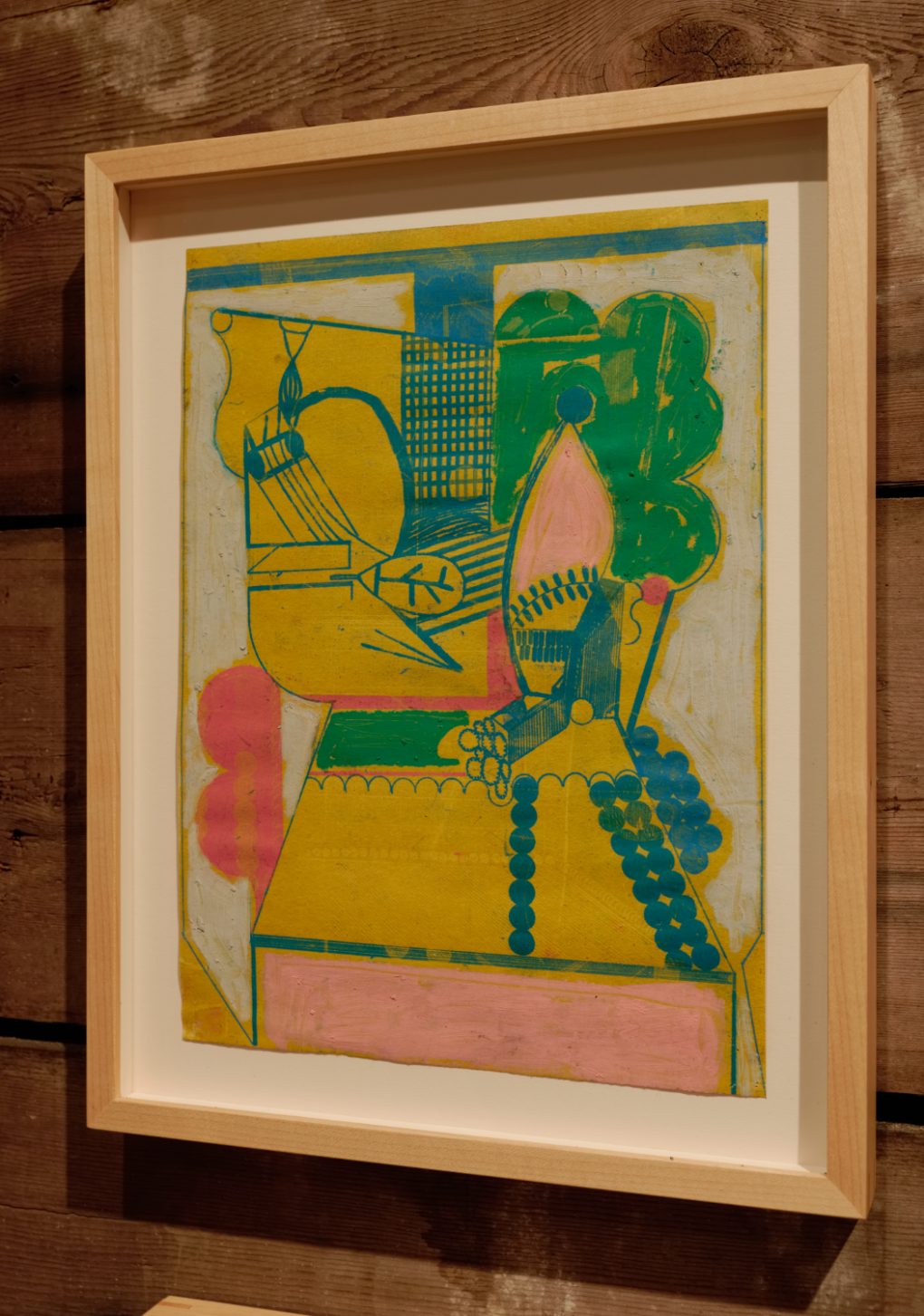 Rodriguez Solitaire, 2019, Oil on found paper, Unframed: 8.5 x 12” / Framed: 11.5 x 14.5”
Rodriguez Solitaire, 2019, Oil on found paper, Unframed: 8.5 x 12” / Framed: 11.5 x 14.5”
Hiroyuki: I like that. There is an element of faith in facing the unknown as we make. When I visited you last time, it was eye-opening to see your work being so much a part of your family. This also extends to your position at R&F Pigment Sticks. Instead of seeing the creative process as an opposing element against your circumstance, you have put good efforts in creating an environment that enhances your work as much as your life and people you love. I think this is very significant in terms of making your “faith” grounded to your reality.
In your booklet “This Means I Always Have Something to Do. A Conversation Between Sean Sullivan & John Yau” you talked about differences between working within set conditions as opposed to being more flexible and organic. To me it seemed that you are good at putting your life in a cohesive framework so that you can be free within it.
Now, I assume that you must have challenges on your path. Could you describe some of the biggest obstacles and how you deal with them?
Sean: My apologies for taking so long to respond to this question – time is elusive! which brings me to a challenge I’ve always faced (I think many of us face) which is time – finding the time to make work. At this point I’ve come to terms with the limitations and to be honest if I had ‘all the time in the world’ I’m not so sure I’d be making better work or more work. Having said that I would like more time in the studio – even just for looking, moving things around – thinking. Another challenge I’d have to say is doubt – at times, extreme doubt – I think in some ways the other side of the coin so to speak. Normally I make work and don’t look back but every now and again I do turn and take stock and that can be sobering. I do have to say through all of these challenges I feel very, very lucky to make work and to share work and for all the talented, devoted individuals that I’ve had the opportunity to work with – galleries, artists, etc. and that I get to continue to make work and maintain balance in our family life is so important. I’m grateful.
 Fairgrounds, 2018, Oil on found paper, Unframed: 6 x 8” / Framed: 8.5 x 10.5”
Fairgrounds, 2018, Oil on found paper, Unframed: 6 x 8” / Framed: 8.5 x 10.5”
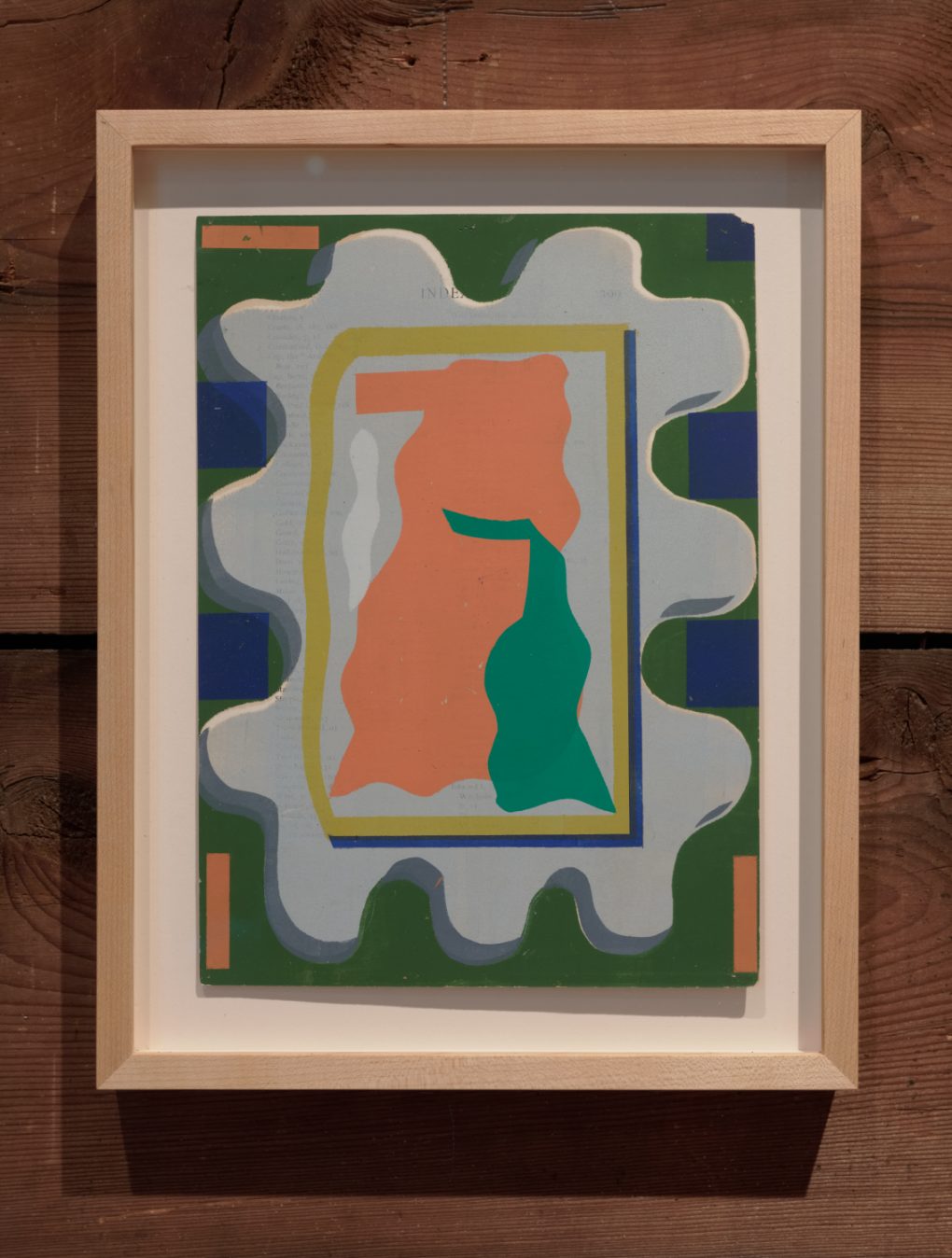 Things huddled together surrounded by uncertainty, 2019, Oil on found paper, Unframed: 7.5 x 11” / Framed: 10.5” x 13.75”
Things huddled together surrounded by uncertainty, 2019, Oil on found paper, Unframed: 7.5 x 11” / Framed: 10.5” x 13.75”
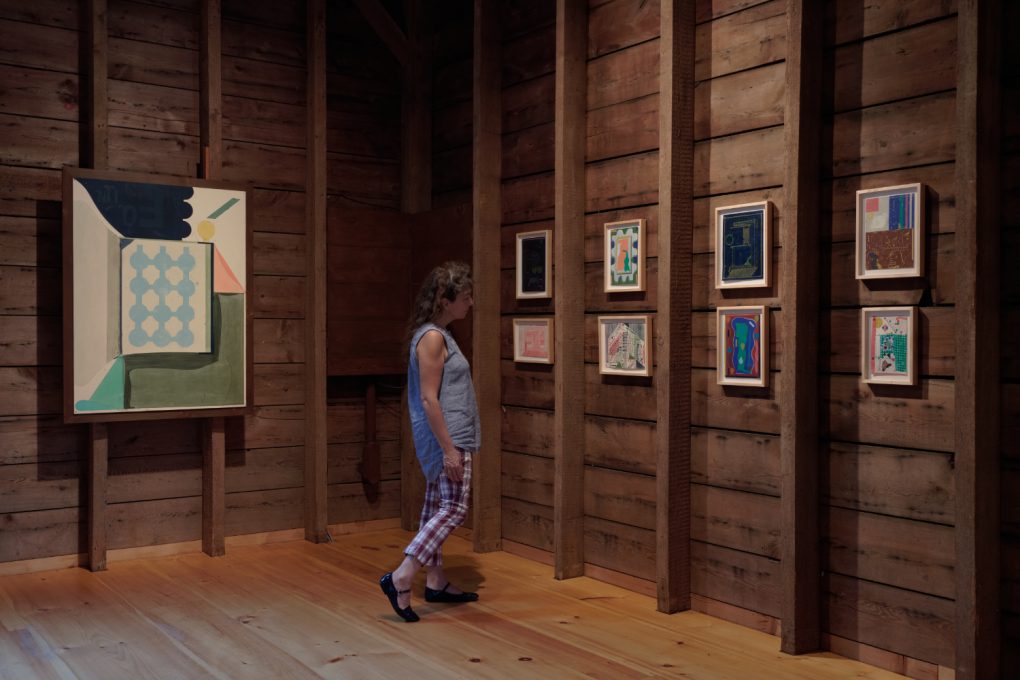
Sean Sullivan’s paintings from Three Painters at Duck Creek. Here is a list of works at the Arts Center at Duck Creek site.
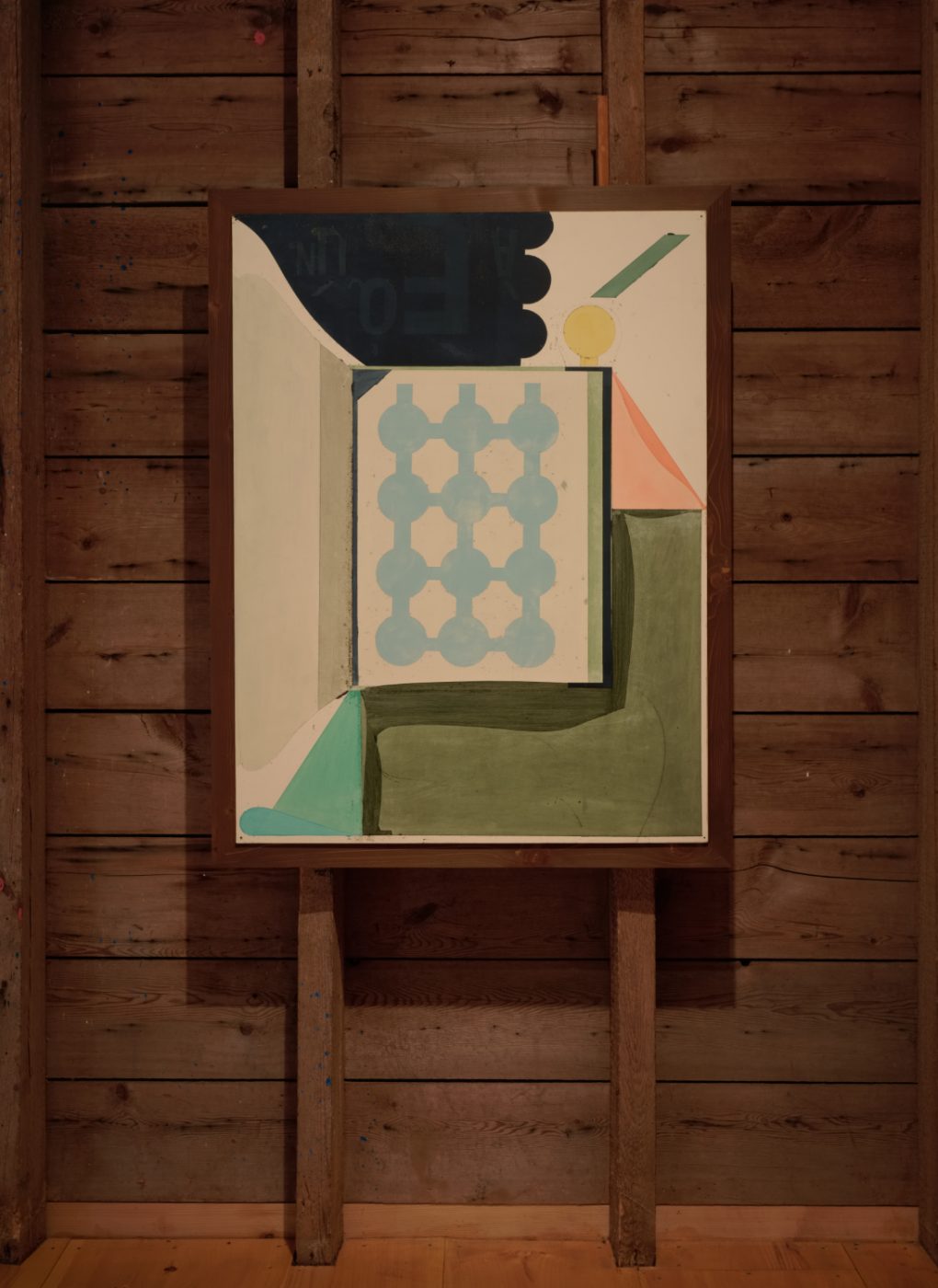 Futures, 2018, Oil on panel Unframed: 36 x 48″
Futures, 2018, Oil on panel Unframed: 36 x 48″
Hiroyuki: You said “doubt–at times, extreme doubt”. Could you elaborate?
Sean: I think doubt in the studio, in life, extreme or otherwise, goes hand in hand with those moments of clarity and inspiration – grace. Time is really the salve. I think you just have to get through it, work through it, until there’s a ‘break in the clouds’. Maybe just the natural order of things – balance. Sometimes I think my doubt stems from not understanding where the work comes from so the ownership of it – the ego is thwarted a bit. If you didn’t ‘think of it’ then maybe you can’t entirely claim credit for it. Where does that leave you as an artist? An ‘originator’. But that is also what I love most about the process. The unknown – the mystery of it. This also works in reverse for me. What I mean by that is if I do have an idea, a ‘concept’ meaning the ego wants to direct the inspiration – it almost always (in my experience) leads to frustration and disappointment. I will say those excursions into frustration and disappointment are not fruitless and often lead to things unexpected – breakthroughs even.
Hiroyuki: Yes indeed, I feel what you are saying. Our perceptions seem to struggle at times, clouded by our immediate interests or lack of understanding, or often both. But, paradoxically, those obstacles also prompt us to explore and seek cohesive expressions that somehow resonate with us. In doing so we struggle to see and we face the unknown in an honest manner. This I regard as one of the most crucial aspects of the making process, which I believe resonates with our struggle in how to be.
Thank you so much for the fascinating conversation and I look forward to seeing more of your fantastic work.
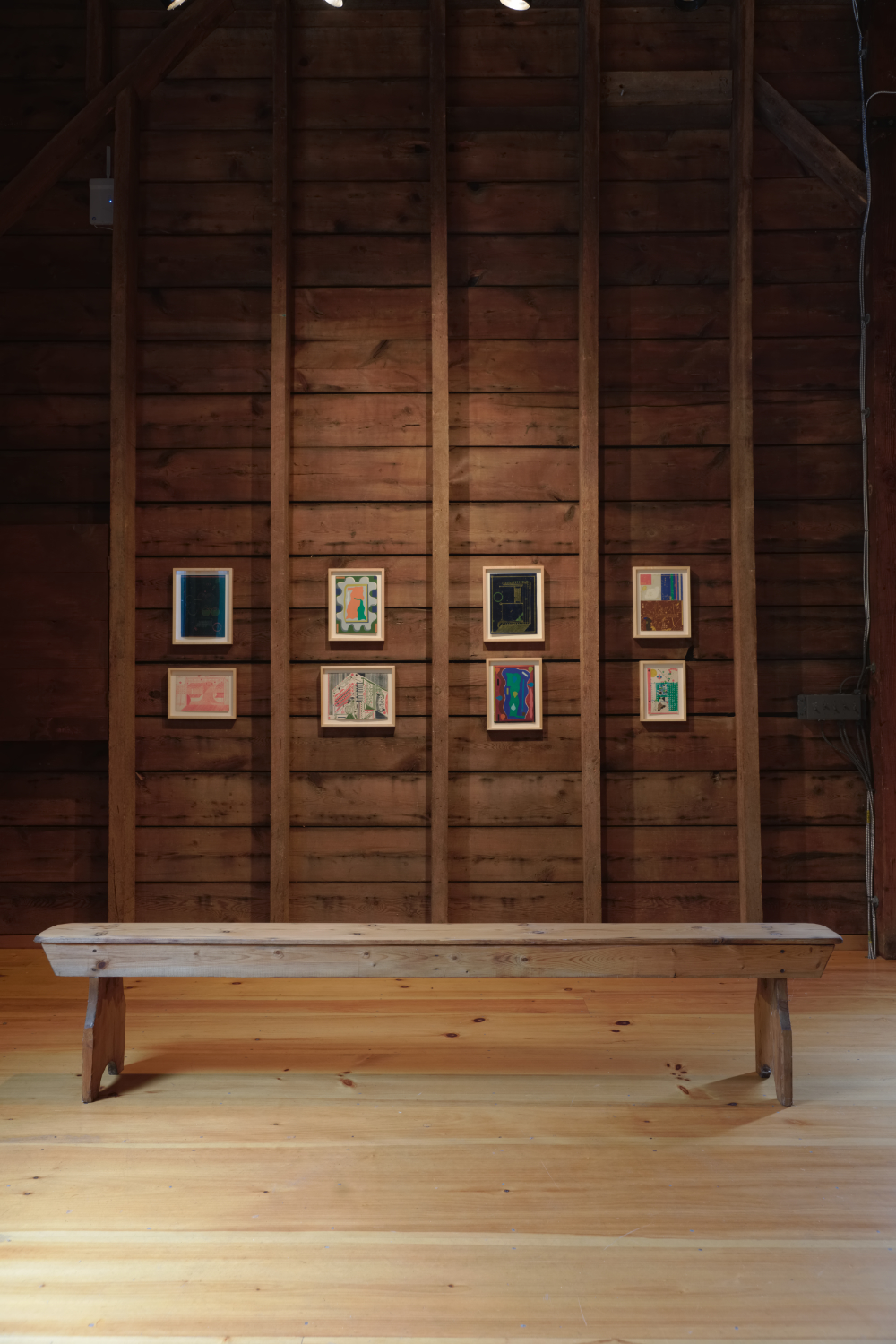
Sean Sullivan’s paintings from Three Painters at Duck Creek. Here is a list of works at the Arts Center at Duck Creek site.
Sean Sullivan (b. 1975 Bronx, NY) lives and works in the Hudson Valley, NY. He received the NYSCA/NYFA Artist Fellow in Printmaking/Drawing/Book Arts Grant in 2017. Sullivan has participated in group exhibitions at the Samuel Dorsky Museum of Art at SUNY New Paltz, NY; the Markus Luttgen Gallery, Cologne, Germany; and the Museum for Drawing, Huningen, Belgium.